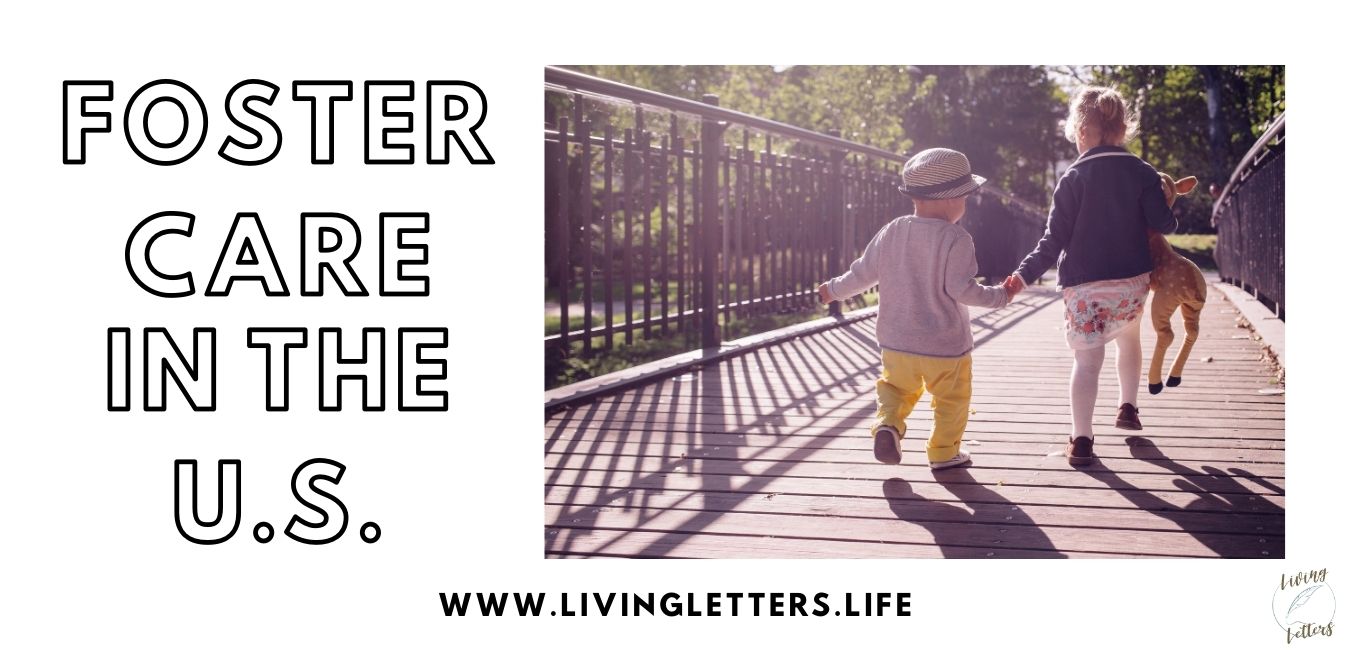
In the United States, foster care is a unique opportunity for parents who are looking to care for displaced children for a temporary amount of time. Fostering is usually a process that lasts only about a year to two years at most (https://raiseachild.org/foster-care-statistics/). However, that time can be crucial to providing stability for children while their biological parents work towards reunification or while a permanent family is sought.
While that is the very definition of fostering, the impact of foster care on children often contributes heavily to their emotional, psychological, spiritual, and physical well-being. The importance of this impact is not something to regard lightly and is a calling that Christians should consider. There is no doubt that ministering to foster children is exactly the kind of thing Jesus was talking about when he spoke of “ministering to the least of these.”
“ The impact of foster care on children often contributes heavily to their emotional, psychological, spiritual, and physical well-being. ”
From infancy to teenagers, children come into this program from extremely difficult backgrounds: being the target of or witness to abuse/parental abuse, being exposed to drugs, and at the very least, suffering from some kind of neglect. Many have had few or no good role models, while at the same time being burdened with adult responsibilities. Consequently, sometimes these kids have zoned out in their minds to avoid what they see going on around them.
To outsiders, removal from the home is a necessary rescue—but to the children, it can mean a sudden separation from parents and caregivers to whom they are emotionally attached. They may be pulled from schools and teachers who have provided the only security they have known. At any rate, they are placed in completely strange homes with strangers, no matter how kind the strangers may be.
On the Child Welfare Information Gateway website, which is a part of the Department of Health & Human Services and a branch of the Children's Bureau, resides a list of statistics about foster care from the fiscal year of 2018. In that year, about 440,000 children were in foster care. 250,000 children left foster care that year, and 260,000 entered into it, approximately. It is important to note that the term “foster care” in these statistics includes what might be thought of as a traditional foster family situation (nonrelatives caring for the child), as well as relative foster family homes, institutions, trial home visits, group homes, and other living situations outside of the biological family's home (https://www.childwelfare.gov/pubPDFs/foster.pdf, 4). Over 50% of those children were in foster care with the end goal of reuniting with their biological parents. Approximately that same percentage were eventually reunited with their birth families.
“ They are placed in completely strange homes with strangers, no matter how kind the strangers may be. ”
As for gender, there are more boys than girls by just a few percentage points. Most children enter foster care between the ages of 6 and 7, according to 2018's data, but foster care can start from infancy until legal adulthood is reached, or even later. In September 2018, about 44% of children in foster care were White, 23% were Black, 21% were Hispanic (any race), 10% were multiracial or of other races, and 1% were unable to be identified (https://www.childwelfare.gov/pubPDFs/foster.pdf, 9).
With this background information on foster care, one can see how crucial it is to consider becoming a foster parent. Christians are told to “learn to do good; seek justice, reprove the ruthless, defend the orphans, plead for the widow” (Isaiah 1:17). Fostering children is a calling; it might not be what every believer is called to do. However, for those who are called, it is important to do research on the agencies available to them as well as the type of fostering in which to become involved.
“ Fostering children is a calling. ”
Every state has its own foster regulations that require training, administrative application processes, and final approval. Homes and those living in them must be inspected and approved. Public agencies are part of a state's division of child services. Children in these foster systems are taken from parents while the parents either work for reunification or if that proves impossible, await adoption. Relatives of children often try to foster them and may also eventually adopt them. Private adoption agencies that arrange adoptions between birth parents of unborn children and adoptive parents, need short term foster care of the infants once they are born until the legal time limits that may be involved before the adoption can be finalized after birth. This type of fostering would be for infants only and would be very short term.
For children with severe medical, mental, emotional or psychological needs, developmental delays, or other special needs, foster care requires that the parents be able to provide the special care needed and be able to assist children by getting the proper community resources to the children in their care. “Treatment foster care” is the highest level of foster care. These parents must have very specialized training and skills and provide 24/7 support.
Finally, a kind of short-term fostering is known as respite or temporary care. It allows primary caregivers giving the specialized care described above and their children to have some time apart to prevent the caregivers from over-fatigue or burnout.
“ 'Treatment foster care' is the highest level of foster care. ”
While foster parents have no choice in which children are sent to them, they are able to choose the ages and gender that they prefer. A foster parent may also call their social worker at any time, if they feel they cannot provide for the needs of the child that has been placed with them.
The United States is currently experiencing a severe shortage of foster homes and parents. According to the Huffington Post, https://www.huffpost.com/entry/the-foster-care-crisis-the-shortage-of-foster-parents_b_59072dcfe4b05279d4edbdd9, this shortage sometimes results in children sleeping in child welfare offices. The situation itself has become a crisis, a sad result for the children who need to be rescued from their own crisis situations.
The National Foster Parent Association (https://nfpaonline.org/foster) is a good place to find out more information and take the first steps to become a foster parent. This organization known as The National Voice of Foster Parents says “Foster parenting is not a lifetime commitment to a child and his or her family, but a commitment to be meaningful in the child and family's lifetime.”
“ The United States is currently experiencing a severe shortage of foster homes and parents. ”
For this blog, I wanted to add personal insight from children and parents who have been on either end of the foster care process. As I was researching, the Humans of New York (https://www.humansofnewyork.com/) project popped into my head. HONY is an anthropological project in which photographer and founder Brandon Stanton interviews people on the streets of New York City. He then shares their stories, with their permission, on his social media accounts. I was searching to find stories of people who were in foster care or who have otherwise participated in it, and I came across this story of an elderly woman. Her words struck me:
“I fostered thirteen little babies in my life. It's just a passion I have in my heart. Often they'd just come wrapped in a blanket. I could only foster one at a time because I had five children of my own. But one time a mother dropped three children off on my doorstep. She had just given them chocolate ice cream. I'll never forget how the ice cream was dripping off their faces. Most of the time I'd only have the children for a few months. And once they were adopted, I'd never contact them again. But I often wonder what happened to them. Maybe we'll meet again in heaven.”
“ Fostering is an opportunity to be Christ to children, a local mission field that is ripe for the harvest. ”
For believers, fostering is an opportunity to be Christ to children, a local mission field that is ripe for the harvest. A time to plant seeds in young hearts. A beautiful and memorable way to share the love of Jesus. A lasting sacrifice to Him!
“‘For I was hungry and you gave me food, I was thirsty and you gave me drink, I was a stranger and you welcomed me, I was naked and you clothed me, I was sick and you visited me, I was in prison and you came to me.' Then the righteous will answer him, saying, ‘Lord, when did we see you hungry and feed you, or thirsty and give you drink? And when did we see you a stranger and welcome you, or naked and clothe you? And when did we see you sick or in prison and visit you?' And the king will answer them, ‘Truly, I say to you, as you did it to one of the least of these my brothers, you did it to me.'” -Matthew 25:35-40


Send Me A Message